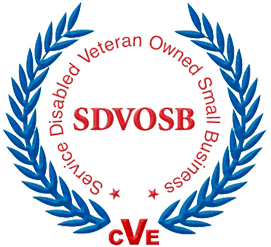Bridging the Digital Divide: Pioneering IT Projects for Rural Health Transformation
Discover effective IT project management strategies for rural health settings. Learn how to plan, implement, and optimize healthcare technology solutions to improve access and outcomes in underserved communities. Enhance your skills in bridging the digital divide and transforming rural healthcare delivery.
IT Project Management With Rural Health IT
Project management is crucial when implementing new IT solutions. You might think it’s just about plugging in equipment, but there’s much more to it. Good projects need careful planning to avoid problems and surprises later on.
Defining goals, setting a budget, and outlining the scope are essential when starting a project. This planning stage helps ensure you get the desired results without unexpected costs. The actual execution often takes less time than the planning and follow-up. After finishing, it’s key to document everything and check that all steps were completed. This process takes time, but it leads to better outcomes for your organization.
Key Takeaways
- Proper IT project planning prevents unexpected issues and costs
- Execution is often quicker than planning and follow-up stages
- Thorough documentation and review improve future project success
The Role of Planning and Management in IT Projects
IT projects need more than just technical skills. Good planning and management are key to success. Many clients think projects are quick and easy. They expect us just to plug things in and go. But that’s not the best way.
Every project needs clear goals, budgets, and plans. Even small projects need proper setup. This takes time upfront, but it’s worth it. It helps avoid surprises and problems later.
Planning often takes longer than the actual work, but it’s crucial. We map out all the steps before we start, which helps us stay on track and within budget.
After the work is done, we don’t just walk away. We check everything carefully, ensuring all steps were followed and the project met its goals. We also write down what we did, which helps with future projects.
For bigger jobs, we do a review at the end. We look at what went well and what didn’t. Did we use more time than planned? Why? This helps us improve for next time.
Good project management takes time. It might seem slow at first. But it leads to better results. You’ll have fewer problems and smoother projects in the long run.


Getting Projects Done Right
Project management takes time and effort. Many think projects can be completed quickly by plugging things in, but proper planning is key to success.
Start by defining your project goals, budget, and scope. Create a detailed action plan before you begin. This prep work helps avoid surprises and problems later.
The execution phase is often shorter than planning. But don’t rush through it. Follow your plan carefully.
After finishing, close out the project properly. Document what you did. Check that you met all goals and followed each step.
For bigger projects, do an after-action review. Look at what went well and what didn’t. Check if you stayed on budget and schedule. Learn from any issues to improve future projects.
Taking time to manage projects properly prevents headaches down the road. The extra effort is worth it for smoother, more successful results.
Working Through Past IT Project Challenges
Many clients have had frustrating experiences with past IT projects. Their previous providers may have rushed through jobs without proper planning. This can lead to problems down the road.
Good IT projects take time and effort. There are several key steps involved. First, define the project goals, budget, and scope. Next comes careful planning before any work begins. This avoids surprises and ensures you get the results you want.
The execution phase often takes less time than planning and follow-up. But those other steps are crucial. After the work is done, you need proper documentation and verification of success. For more significant projects, an after-action review helps identify lessons learned.
This process may seem long. But it prevents issues that can crop up from rushed jobs. A little extra time upfront saves headaches later. When choosing an IT provider, look for one that thoroughly approaches projects.
CCSIT Pros’ Project Management Approach
At CCSIT Pros, we take project management seriously. We know it’s not just about the tech but everything surrounding it. Good project management takes time and effort, but getting things done right is worth it.
When you work with us, we start by clearly defining the project. What are your goals? What’s your budget? What’s the scope? We create a solid action plan, even for small projects. This upfront planning helps avoid surprises and ensures you get the desired results.
Our process has four main steps:
- Initiate
- Plan
- Execute
- Close
The execution phase is often the shortest part. We spend more time planning and following up to ensure everything goes smoothly.
Finally, we document everything and check that all steps were followed. We made sure the project was indeed successful. For more significant projects, we do an after-action review. This helps us learn and improve for next time.
We look at things like:
- Did we stay within scope?
- If not, why?
- Were there any unexpected roadblocks?
- How can we avoid issues in the future?
This careful approach takes more time than just “plugging things in.” But it leads to better results and fewer problems down the road. When you work with us, you can trust that your projects are in good hands.
Managing Projects Effectively
Setting Clear Goals and Parameters
You need to start by clearly defining what you want to achieve. Set specific goals for the project. Decide on a budget and outline the scope of work. This step helps avoid confusion later on.
Creating a Detailed Plan
Next, develop a step-by-step plan for your project. Break down big tasks into smaller, manageable pieces. Assign roles and set deadlines. A good plan acts as a roadmap for your team.
Putting the Plan into Action
This phase involves carrying out the tasks in your plan. It’s often the shortest part of the project. Your team works together to complete each step. Keep track of progress and deal with any issues that come up.
Checking Results and Recording Information
After finishing the main work, review what you’ve done and ensure you met all your goals. Write down everything that happened during the project. This information will be useful for future projects.
Wrapping Up the Project
Finish strong by tying up loose ends. Make sure all tasks are complete. Check that the result meets your expectations. Take time to learn from the experience. Think about what went well and what you could do better next time.
Project Review and Analysis
Lessons from the Project
You need to take time to plan and manage projects, even small ones, properly. This involves defining goals, setting a budget, and creating a detailed action plan before starting. While the execution may be quick, proper planning prevents problems and surprises later on.
Documenting the process is vital. Track each step and ensure you meet all objectives. This helps ensure success and allows you to learn from the experience.
Checking Project Scope and Time
Look at whether you stuck to the original project scope. If a 50-hour project took 75 or 100 hours, find out why. Did you make mistakes in planning? Did unexpected issues come up?
Analyze what caused any delays or problems. This helps you avoid similar issues in future projects. The goal is to improve your process each time.
Reviewing projects may seem tedious, but it leads to better results than rushing through tasks. Be patient with the process—it’s worth it for smoother, more successful projects.
Planning: The Key to Project Success
Planning is vital for any IT project. It takes time and effort, but it pays off in the end. When you plan properly, you avoid surprises and get better results.
Good planning starts with defining clear goals, budgets, and scope. This helps prevent problems later. Even small projects need careful planning.
The execution phase often takes less time than planning and follow-up. But don’t skip those crucial steps. They set you up for success.
After finishing a project, close it out properly. Document everything and make sure you meet all goals. This will help you learn and improve for the next time.
Do an after-action review for big projects. Look at what went well and what didn’t. Check if you stayed on budget and schedule. Learn from any hiccups or roadblocks.
Taking time to plan may seem slow initially, but it leads to smoother projects and better outcomes. Be patient with the process—it’s worth it in the long run.
How CCS IT Pros Can Boost Rural Hospital IT Projects
CCS IT Pros can help rural hospitals across the United States with expert IT project management. We take a careful approach to ensure projects are done right, which means spending time planning before jumping in.
Our process has four main steps:
- Initiation
- Planning
- Execution
- Closure
We define the project goals, budget, and scope in the initiation phase. This helps avoid surprises later on.
Planning is crucial. We create a detailed action plan, even for small projects. This step often takes longer than the actual execution, but it’s worth it.
During execution, we put the plan into action. This part is usually quick since we’ve done thorough planning.
The closure phase involves:
- Documenting the project
- Checking that all steps were followed
- Making sure the result meets goals
For more significant projects, we conduct an after-action review. We examine what went well and what could be improved, helping us learn and improve next time.
We checked if we stayed within the planned scope and budget. If not, we figure out why. Was our initial estimate off? Did something unexpected happen?
This careful approach takes more time upfront. But it leads to smoother projects and better results for your hospital. You’ll avoid costly mistakes and get the outcomes you need.
Latest Blog Posts
5 Real AI Use Cases for Small Medical, Legal, and Accounting Firms
SMB AI Use Cases Are Transforming Professional Service Firms Small professional service firms face pressure [...]
How to Create a Business Continuity Plan That Works
Introduction Every business faces unexpected disruptions — from power outages and cyberattacks to natural disasters. [...]
5 Ways to Enhance SMB Business with an MSP
Introduction Small and medium-sized businesses face more technology pressure than ever. Cybersecurity risks, cloud adoption, [...]
How to Secure Your Business Before the Holiday Season
The holiday business security guide is essential for every small and medium-sized business preparing for [...]
5 Things SMBs Must Know About Holiday Phishing Scams
The holiday phishing scams tips every small and medium-sized business needs are simple but powerful. [...]
5 Things Manufacturers Need To Know Before Hiring A Local IT Company
5 Things Manufacturers Need To Know Before Hiring A Local IT Company Are you looking [...]











